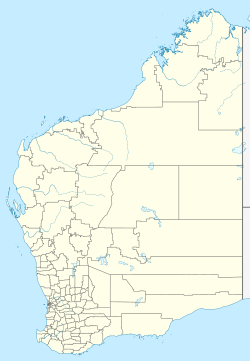| Warakurna Western Australia | |||||||||
|---|---|---|---|---|---|---|---|---|---|
 | |||||||||
| Coordinates | 25.015°0′S128.299°0′E / 25.015°S 128.299°E | ||||||||
| Population | 268 (UCL 2016) [1] | ||||||||
| Postcode(s) | 6642 | ||||||||
| Area | 51.8 km2 (20.0 sq mi) | ||||||||
| Time zone | ACST (UTC+9:30) | ||||||||
| Location |
| ||||||||
| LGA(s) | Shire of Ngaanyatjarraku | ||||||||
| State electorate(s) | North West Central | ||||||||
| Federal division(s) | O'Connor | ||||||||
| |||||||||
Warakurna is a large Aboriginal community, located in the Goldfields-Esperance region of Western Australia, within the Shire of Ngaanyatjarraku and is situated on the Great Central Road (part of the Outback Way ultimately connecting Perth to Cairns diagonally across Australia). [3] It is at the western end of the Rawlinson Ranges. [4] At the 2016 census, Warakurna had a population of 268, including 237 who identified as Aboriginal Australians, most of whom speak Ngaanyatjarra at home. [5]
